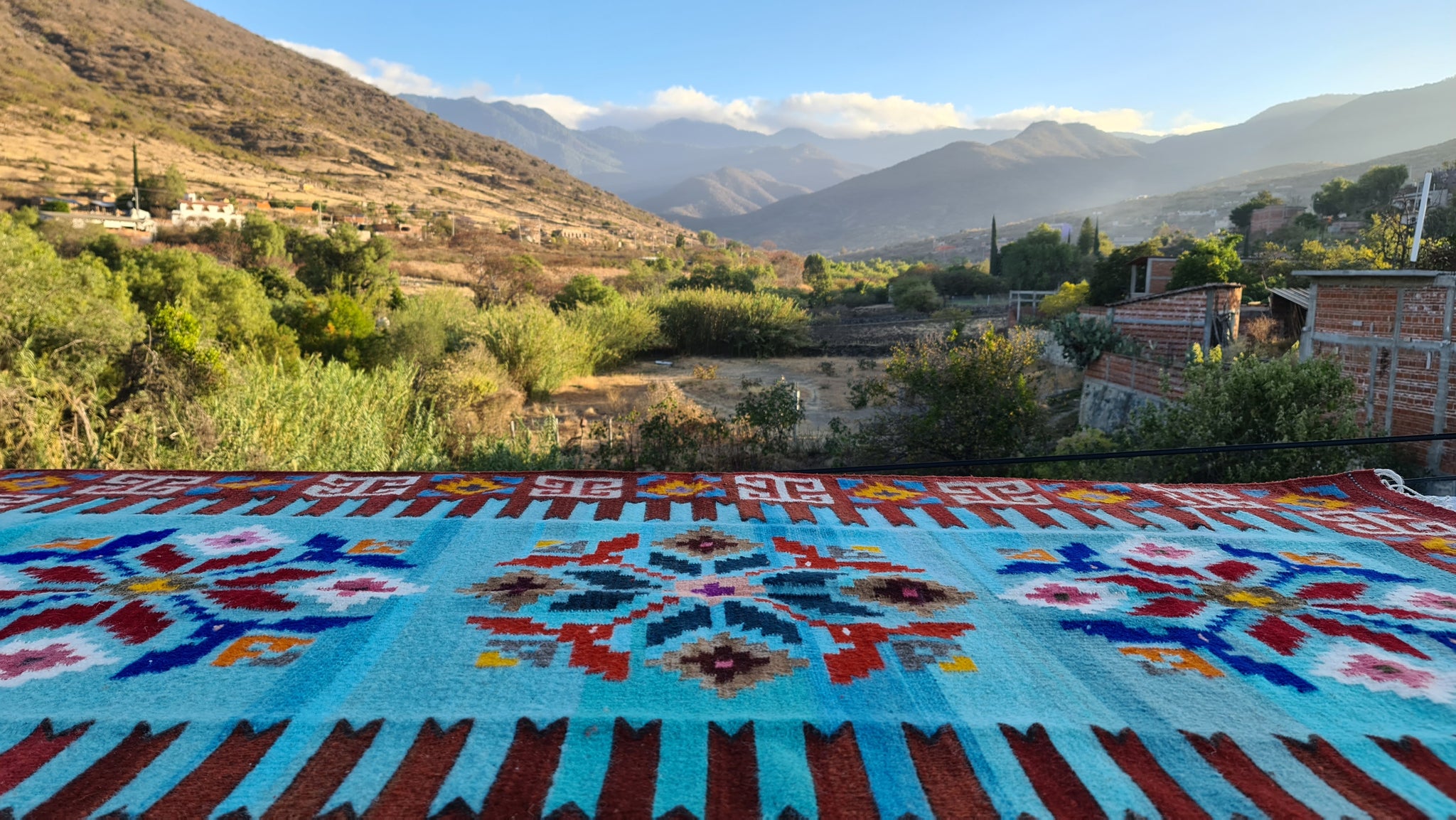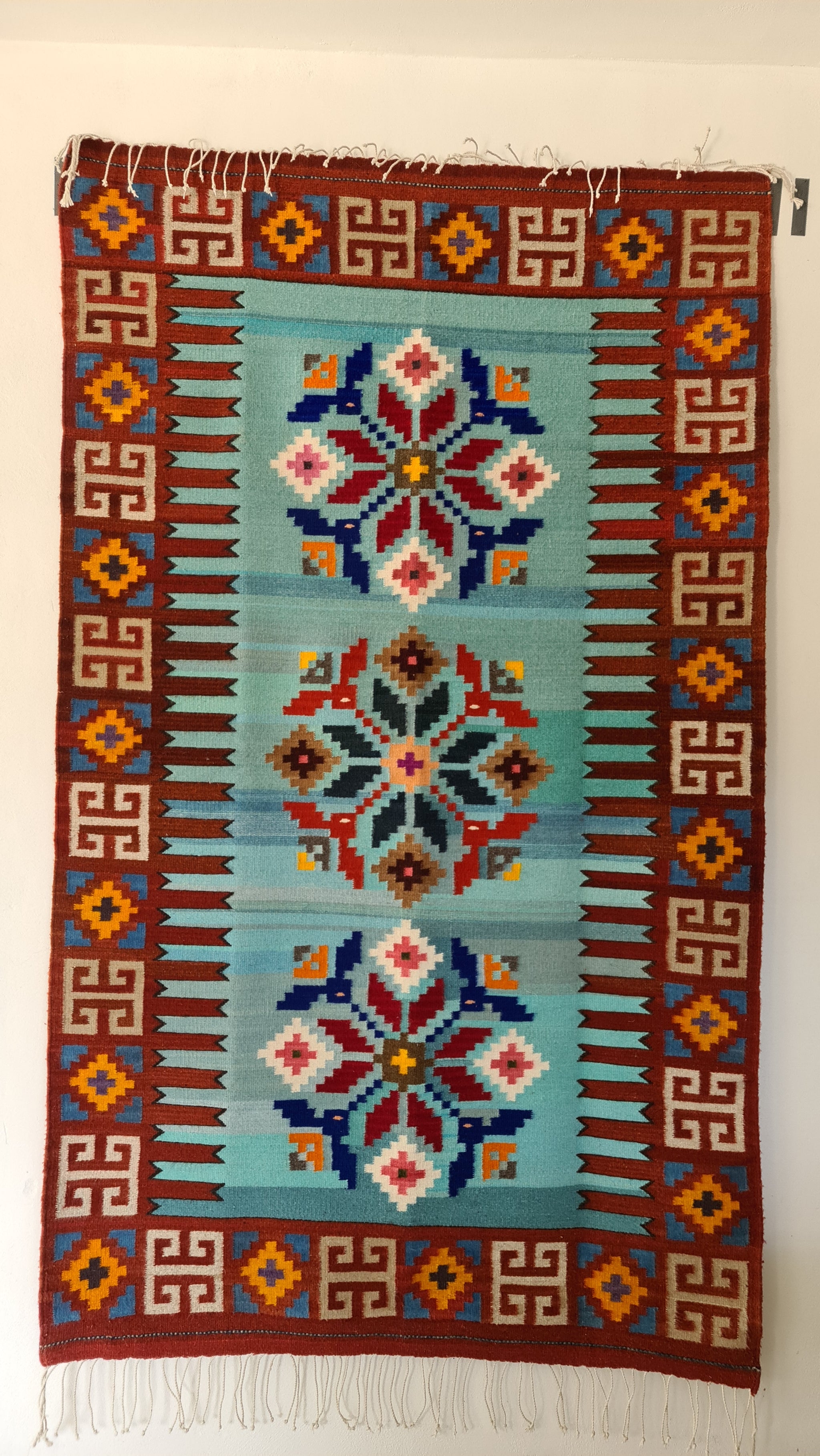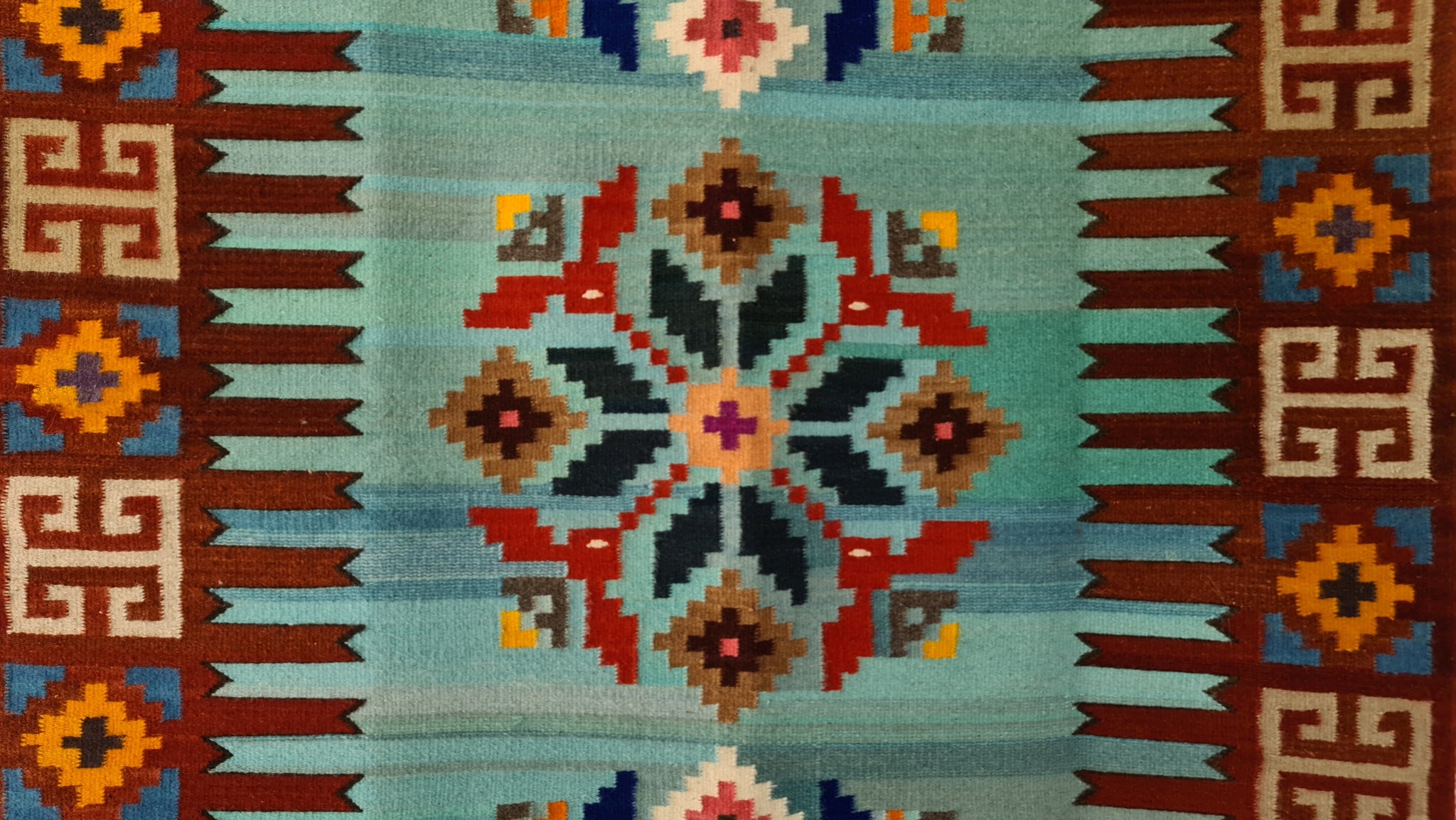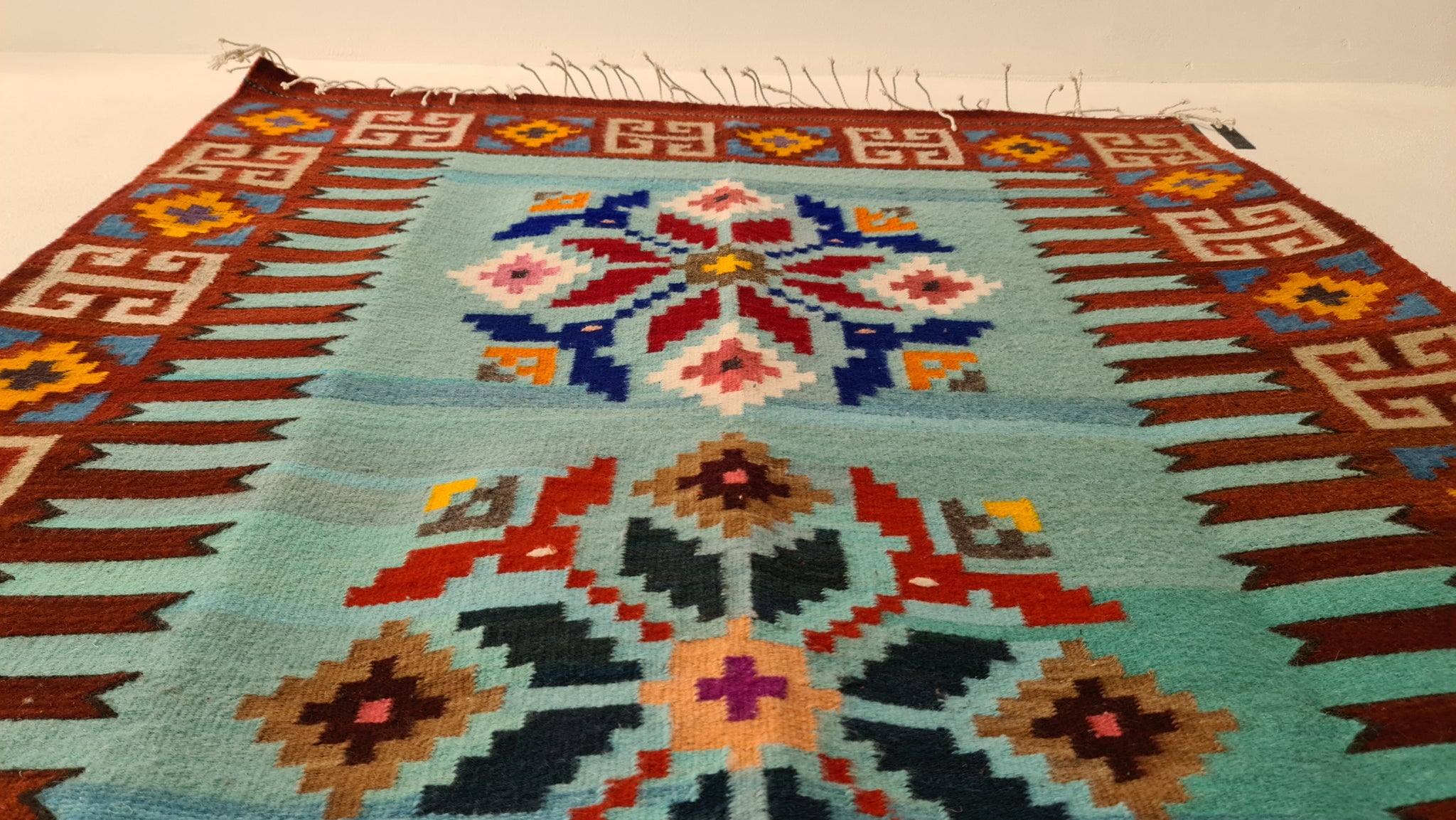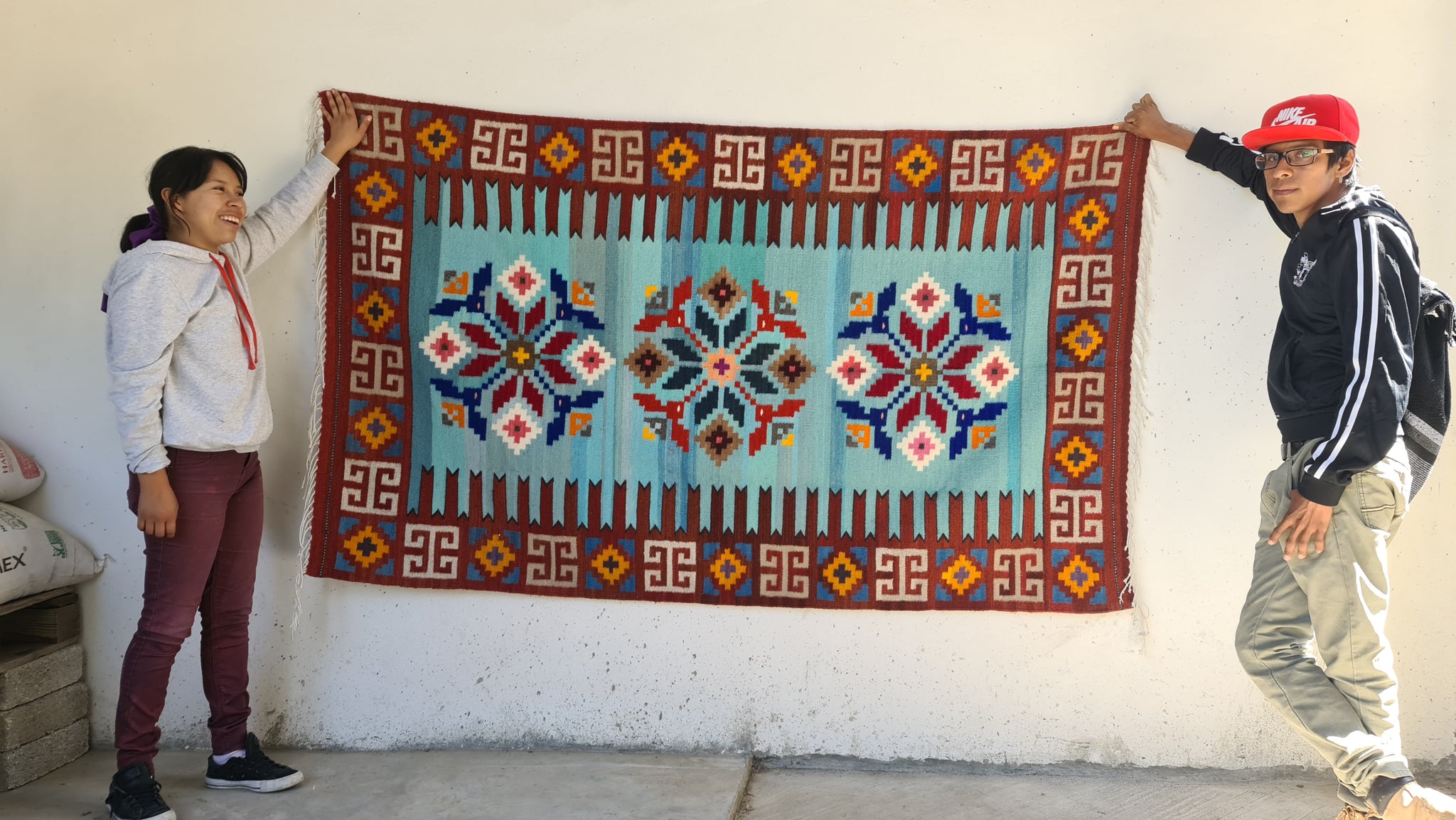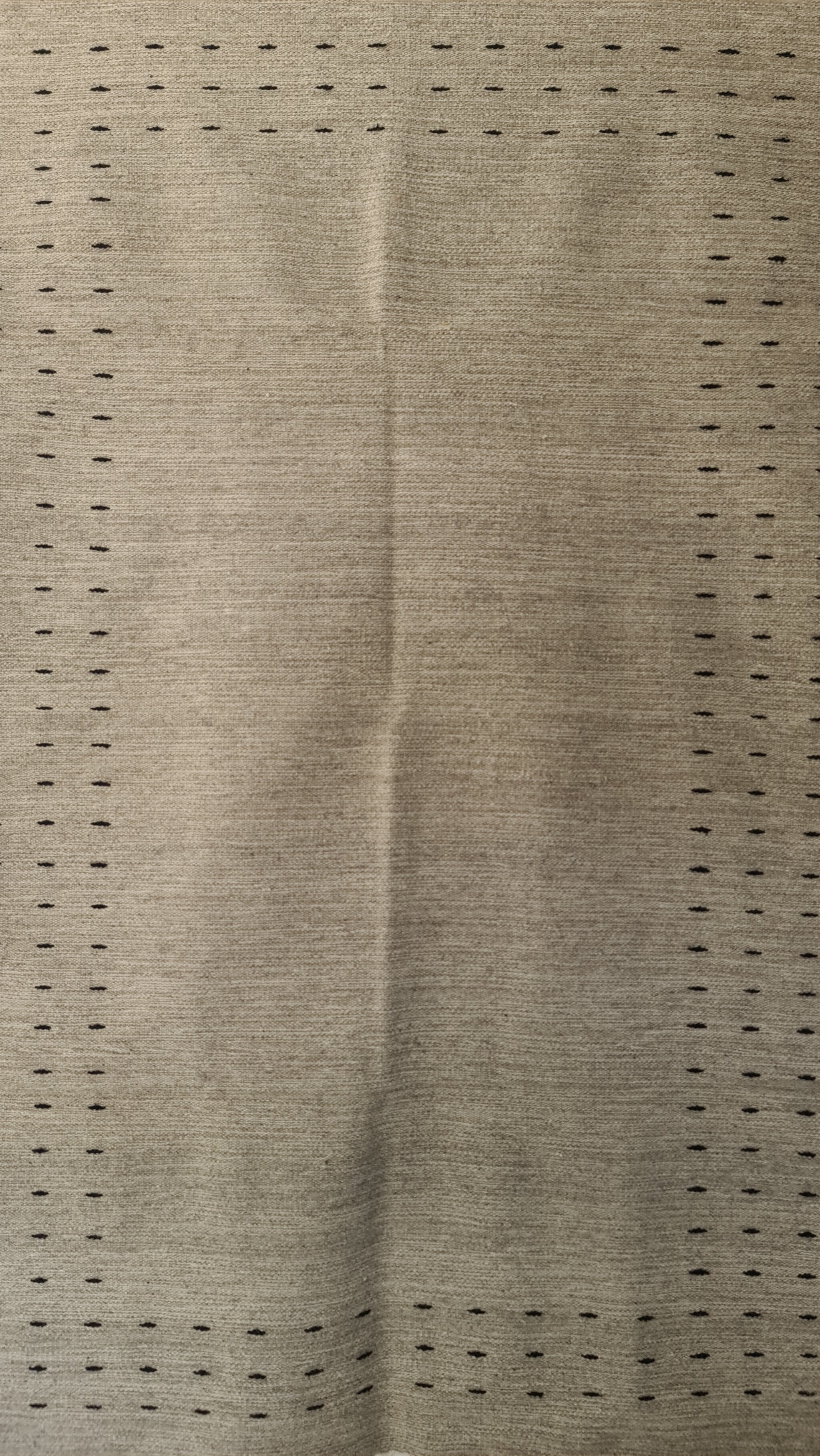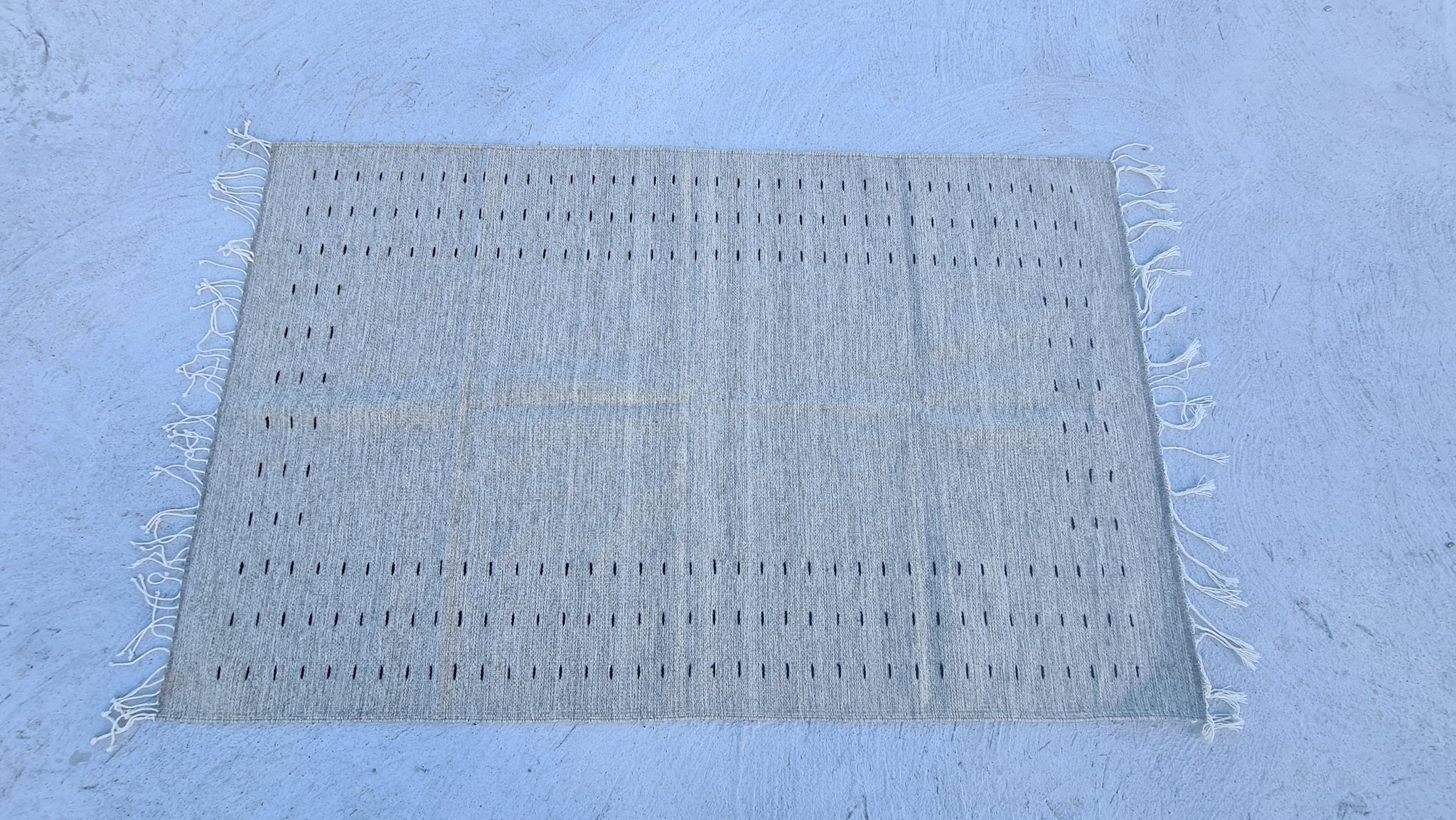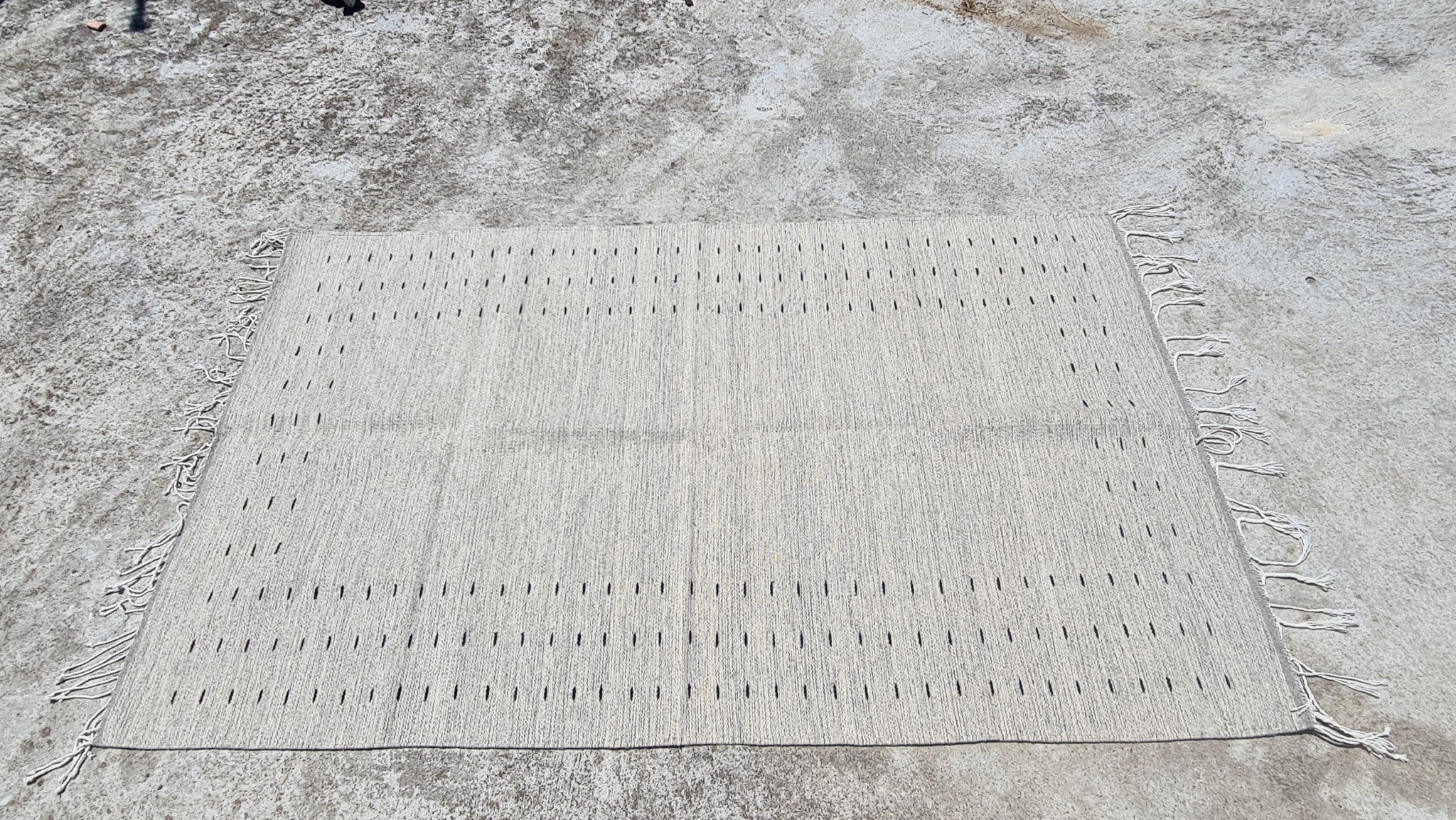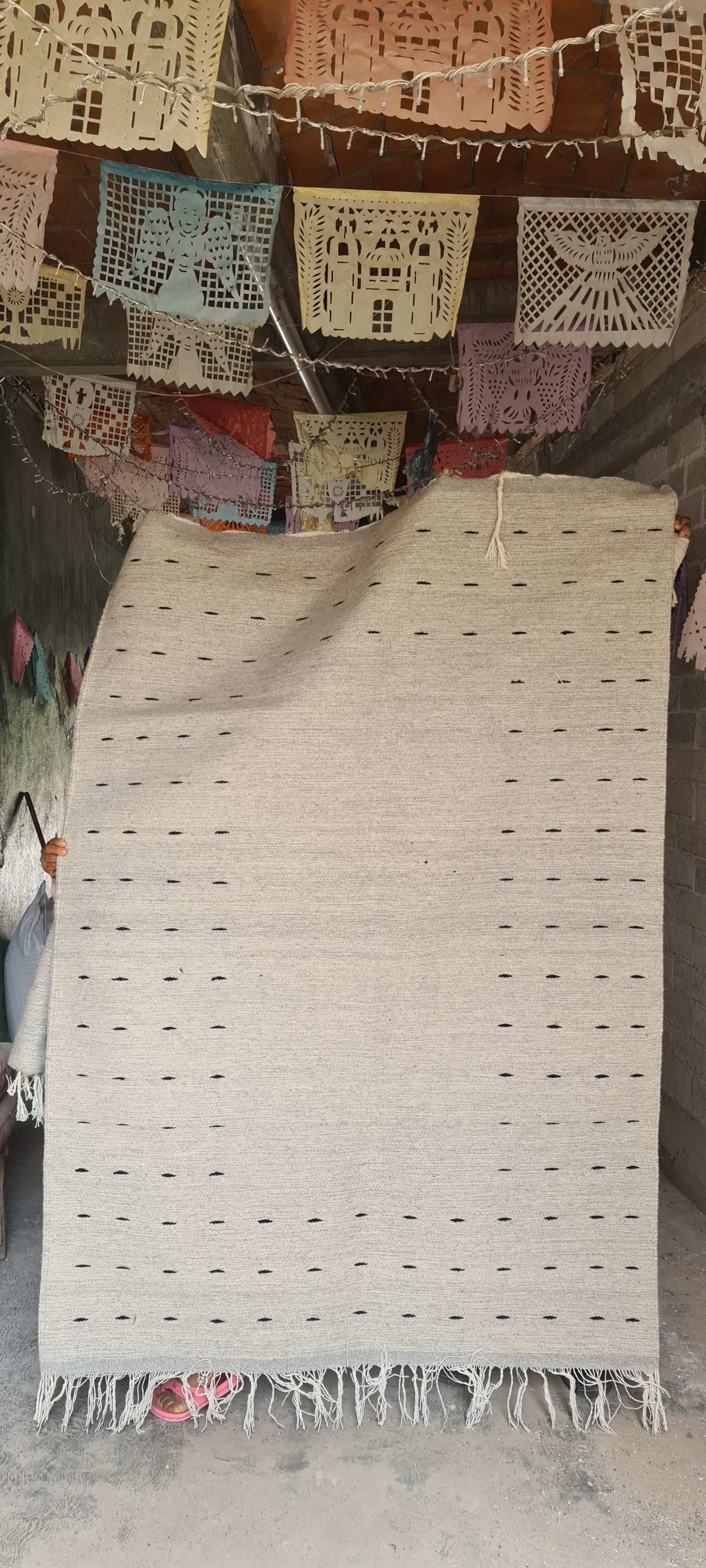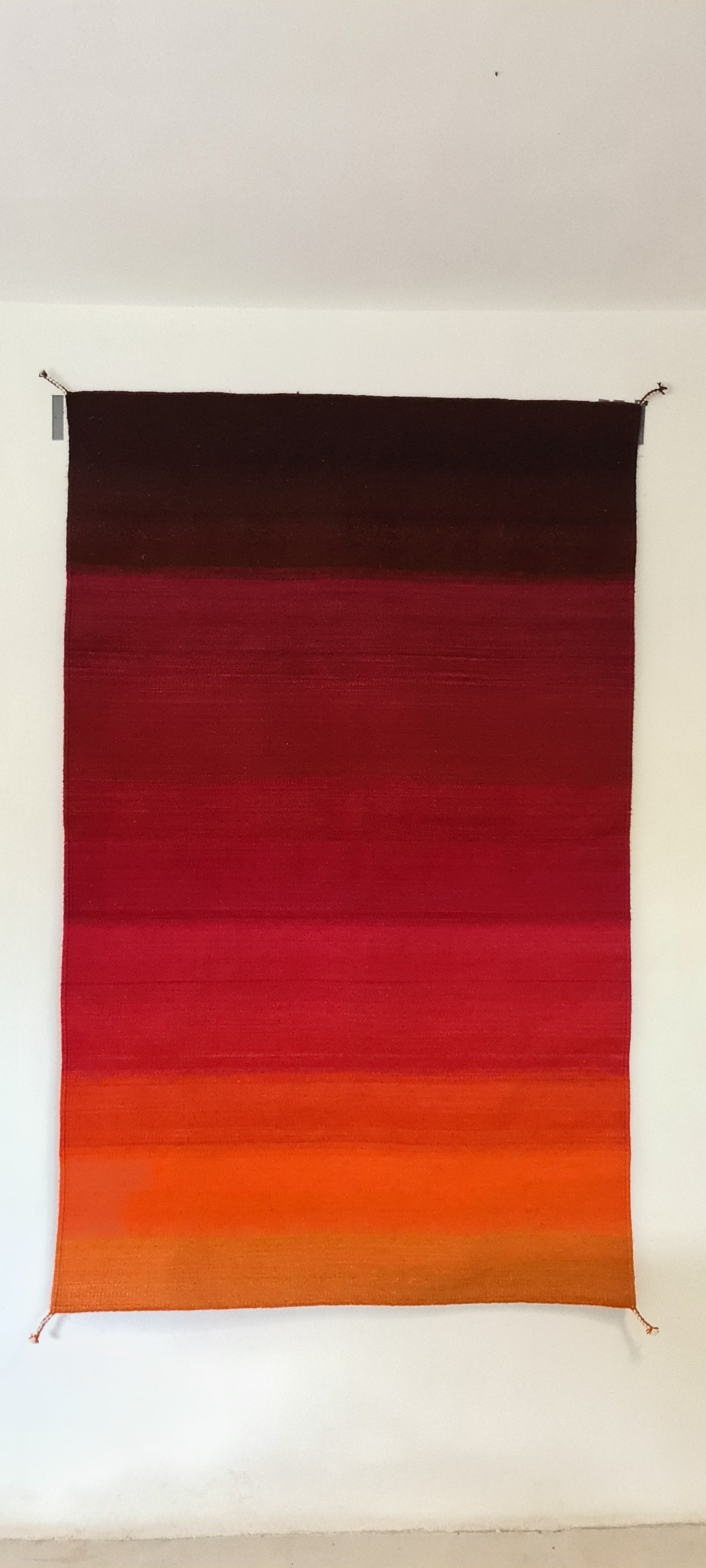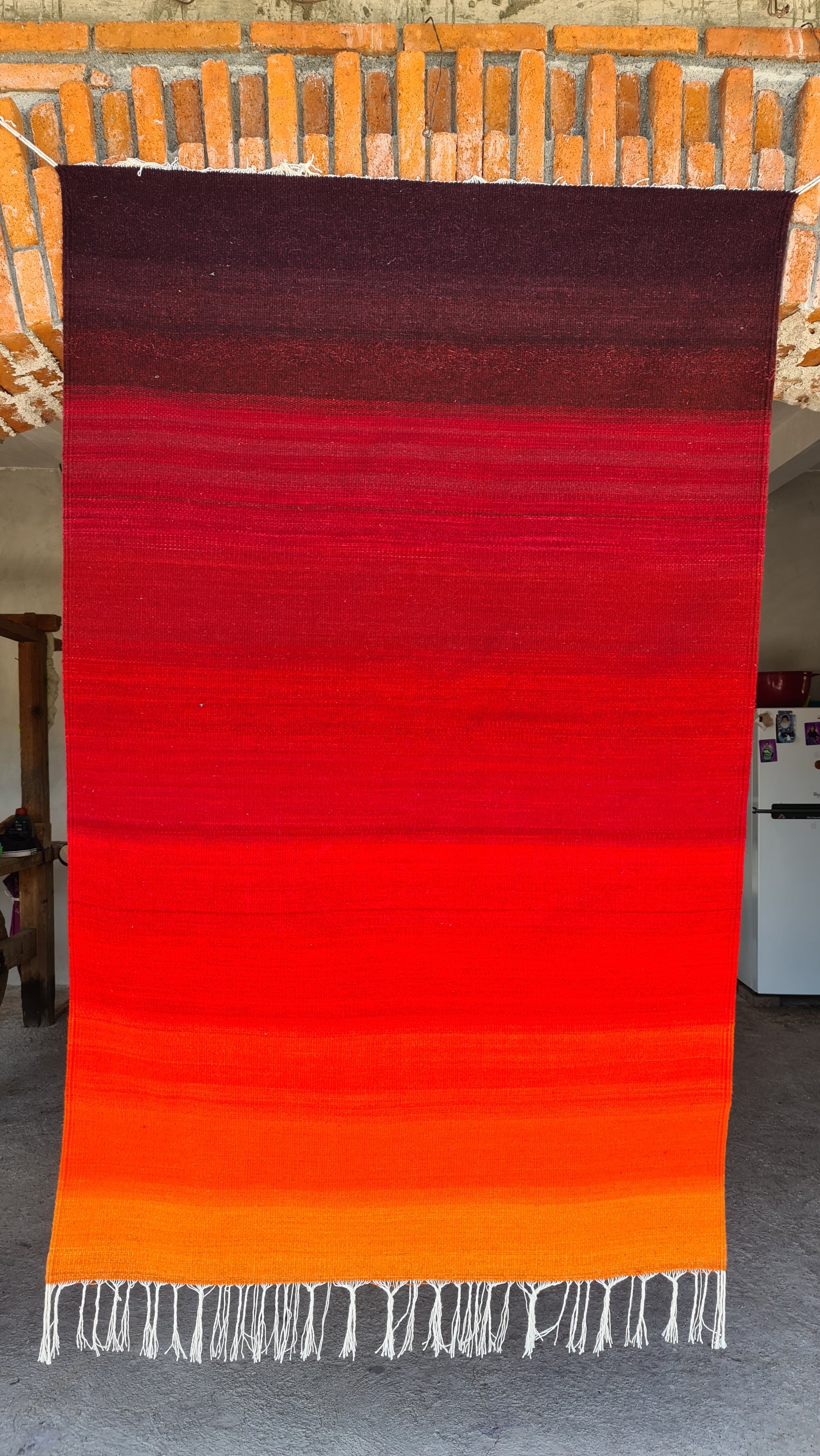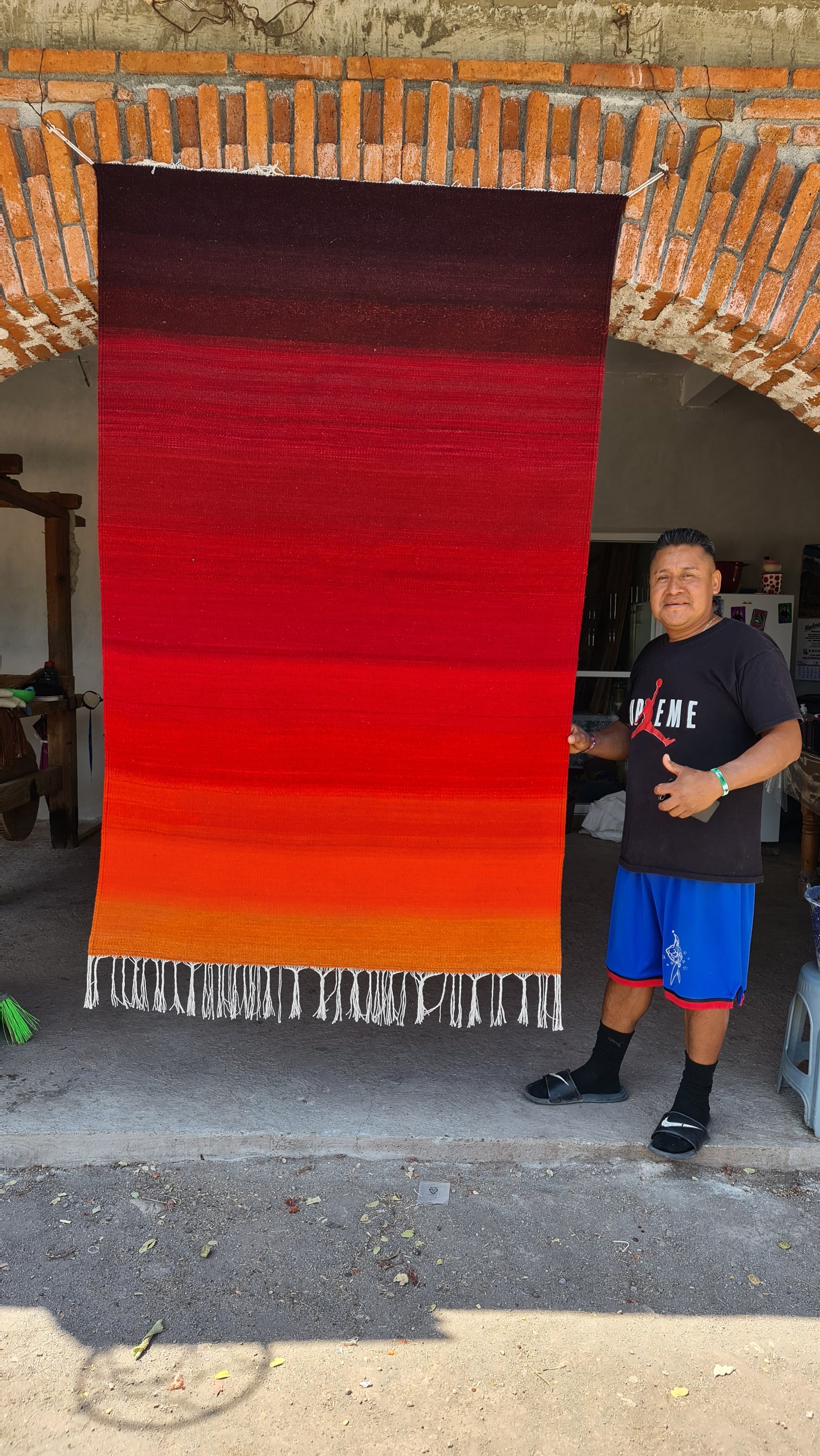Baali Guiísh: star of enlightenment
$ 20,500.00
Size: 130x200cm; 4.2x6.5ft
Weaver: Juan Lazo Gutierrez
Materials and Methods: criollo sheep wool hand dyed with colorfast aniline dyes using an exhaustive method. Handwoven on a Zapotec style loom of the 16th century adapted from European styles. Woven using a 7 threads per inch reed.
Design, patterns and symbols.
The entire cycle—263 as a morning star, 50 days absent, 263 days as an evening star, and finally, 8 days absent—takes 584 days, an interval also known as the synodic period of Venus.
It just so happens that the synodic period of Venus (584 days) relates to the orbital period of the earth (365 days) in a relatively simple ratio of 5:8. Five times the synodic period of Venus (5 x 584 days) is 2,920 days. If you divide 2,920 by the 365 days in our year, you get 8. In short, the motions of Venus relative to our sun repeat almost exactly every 8 years. Eight years would have been a useful span of time for ancient sky-watchers, who relied heavily on natural cycles to mark time.
Venus transformation from mornign star to evening star represents a life cycle with a 50 day pilgrimage to the underworld of darkness and uknowns to emerge from it bringing light (knowledge) at the end of the day as an evening star. After 8 days of absentism venus rebirths as a morning star in a cosmic cycle of life and death. Our ancestors used this cycle of Venus to represent our journey on earth and the many reecarnations that our spirit will find in its passing through a human experience.
The frame of this rug is woven with the agave pattern, from this plant our ancestors have been distilling our spirtual and ceremonial drink using clay pots and carrizo to extract this spirit. Mezcal helps us connect to the spirit world by heightening our senses and allowing us to see the magic of life. The agave plant shoots up a stalk called quiote that grows really fast towards the sky in order to produce the flowers and seeds for its life cycle, that is where the spiritual power comes from the plant.
The other patterns woven in the frame of this rug is the Nahual pattern that unites the left and right side of our awareness, the intuitive and the logical, the jaguar and the speech, night and day, femenine and masculine so that a third state can be born from which all udality dissapears and the realms are united into one way of perception. This Nahual pattern is interlocked with the Quincunce symbol reminding us to live a live that seeks balance in all four directions.
Share:
Related Items
D'Beælá viínî: three sister seeds
$ 15,600.00
Size: 130x200cm; 4.2x6.5ft Weaver: Asunción Hernández LazoPrice: $500USD Order by DM to Pay by Venmo, Zelle or Cashapp and get free shipping. Materials ans methods: criollo sheep wool in its...
Kayù'u gibish lou Xiguie'a: sunset in Teotitlan
$ 13,500.00
Kayù'u gibish lou Xiguie'aAtardecer en Teotitlan del ValleSunset in the land of the Gods Size: 4.2x6.5ft Weaver: Mario Sosa Price: $677 USD Materials ans methods: criollo sheep wool hand dyed with...

